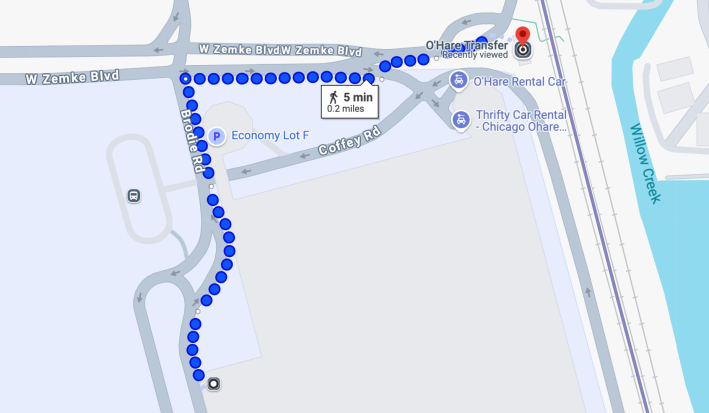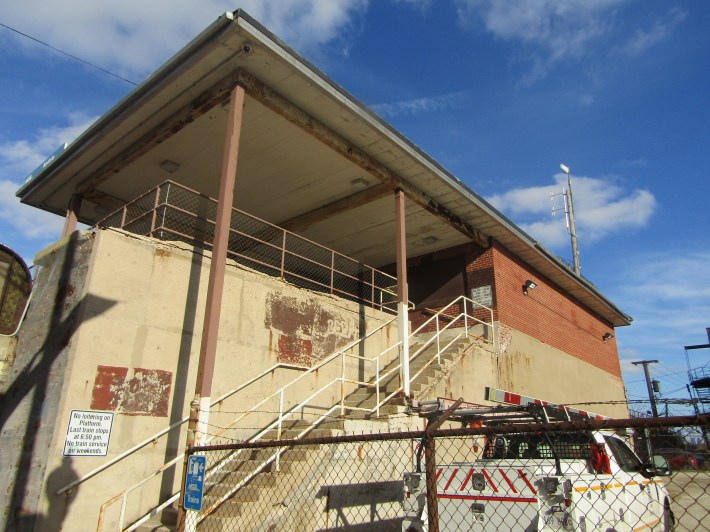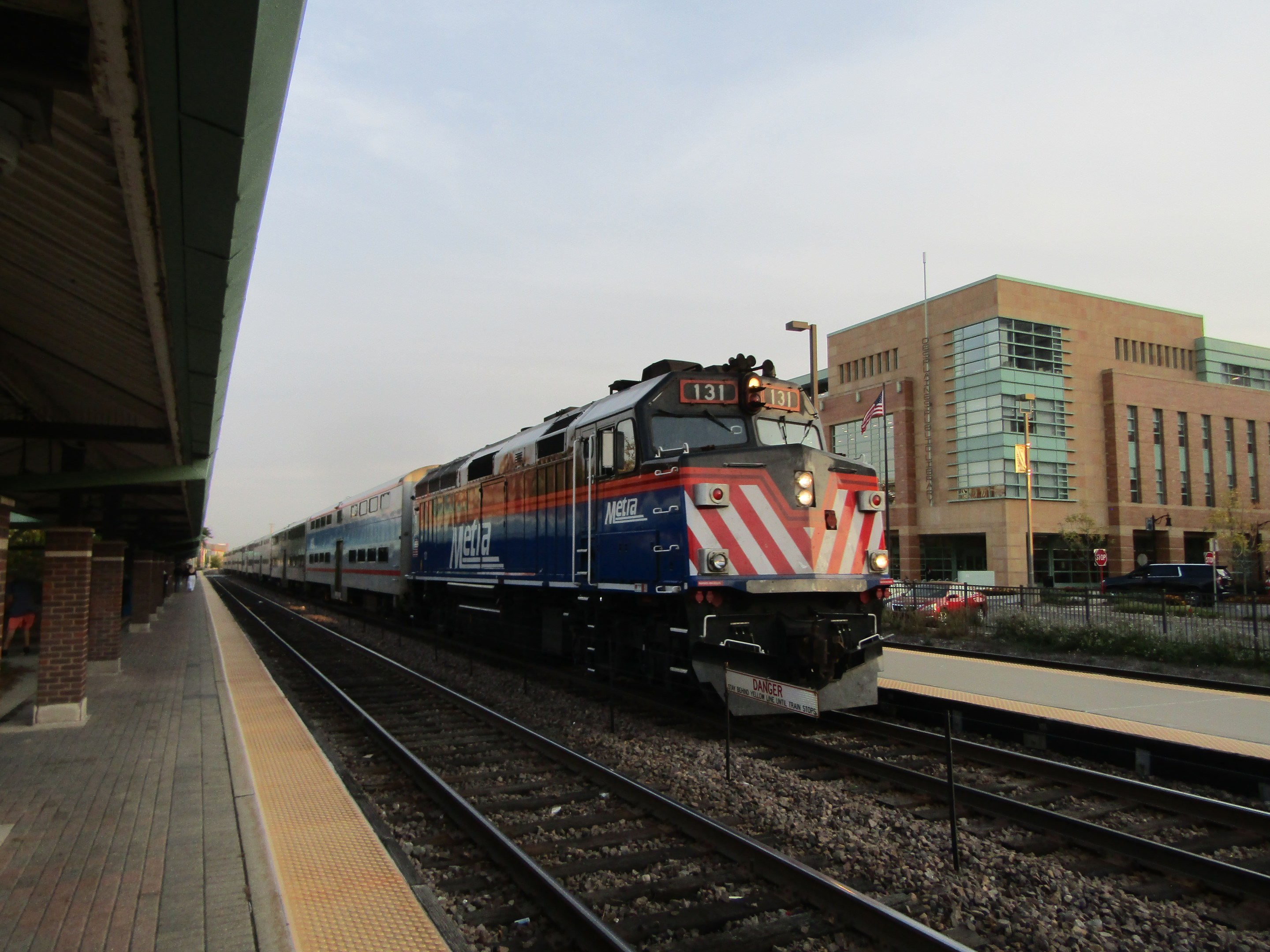
At the last Metra board meeting on Thursday, October 10, staffers introduced a proposed $1.135 billion operating budget, and a $366.4 million capital plan. This may well represent a calm before the storm, as the commuter railroad plans to increase its spending by 3.8 percent next year, compared to 2024.
To put that in perspective, 2025 will be the last year Metra can rely on federal COVID-19 relief stimulus funding to plug budget holes. Next year, the railroad plans to use around $238.4 million in federal money.
On Thursday's board meeting, Chief Financial Officer John Morris told the directors that Metra is projected to have around $93 million in stimulus cash left for 2026, which is expected get it through the end of June. So, while this year’s budget doesn’t contain fare hikes or service cuts, he warned that 2026 budget could be very different.

In fact, the proposed 2025 budget mentions schedule changes on Metra's Milwaukee District West and North Central Service lines. They would be particularly significant for the NCS, since its off-peak schedule is still far below pre-pandemic numbers. The budget sets long-term goals of reducing headways and moving from distinct Saturday and Sunday schedules towards the same schedules every day of the week, although that’s contingent on future funding.
The proposed budget for next year also mentions several major capital projects, including some carryovers from previous years, and some that are brand new. That includes several station improvements in Chicago and the suburbs. The BNSF line’s Riverside, West Hinsdale, and Highlands stations will get accessibility improvement, as will the Union Pacific North line’s Braeside stop. Metra and the Northern Indiana Commuter Transportation District, which operates the South Shore Line, will continue working on increasing capacity at Millenium and Van Buren stations. Metra will also start planning work for several station improvements, most notably making the O’Hare Transfer Station more suitable for express service.
Metra will hold public hearings on the proposed 2025 budget through November 7. The board will approve the final version on November 13. The Regional Transportation Authority, which oversee the three Chicagoland transit agencies, will vote on whether to give final approval on December 19, but that step is usually a formality.
Service Improvements
Since the pandemic, Metra has pivoted toward a "regional rail" model, with more regular off-peak and evening service, and more regularly spaced headways. Back in the spring, BNSF became the first line to get rid of distinct Saturday and Sunday schedules. The Metra Electric and Rock Island District lines have similar schedules, with a mix of Saturday-only runs, and trips that operate both days. As Twitter commenters pointed out, there isn’t much difference between Saturday and Sunday schedules on both Milwaukee District lines.
The proposed budget mentions that "updated schedules for the Milwaukee District West (MDW) and North Central Service (NCS) lines are currently under development." NCS, which only had 10-11 trips each way before the pandemic (depending on how you count Train #120, which operated on parts of the NCS and Milwaukee District North lines), is still down to seven trips each way, and most of them are rush-hour orientated. Metra officials previously talked about restoring some evening service. MDW and NCS share tracks as far west as Franklin Park, but the latter skips all stations between Western and River Grove.
The 2025 budget proposal mentions that, "over the next five years, subject to the constraints of workforce and host railroad agreements," Metra will work toward providing hourly service on weekdays and weekends, including increasing Sunday service, on "full-service lines," basically, all lines except NCS, SouthWest Service and Heritage Corridor. For those three, the railroad would "develop pilot schedules with more consistent service throughout the day and on weekends." SWS lost its Saturday service during the pandemic, and NCS and HC never had it to begin with, though Metra experimented with seasonal "Rails, Trails and Ales" HC Saturday service for the past few falls.
O’Hare Improvements
The O’Hare Transfer Station is located next to the O’Hare Multi-Modal Facility, a car rental facility that’s also the airport’s Pace and intercity bus hub. Metra ran O’Hare to Loop hourly express service during the DNC, but the ridership fell below Metra’s expectations. Metra Executive Director Jim Derwinski blamed that on the convention directing guests to use shuttle buses.
Canadian National, which owns the tracks NCS doesn’t share with MD-W, had resisted increasing regular unless Metra increases capacity. Under the proposed 2025 capital plan, Metra would spend $187,500 to figure out whether there’s space to install new stub tracks. During the pilot, Metra simply used Track 2 to store the train in between trips, but that isn’t a long-term solution, especially if NCS service is going to increase.
The project will also "improve the pedestrian pathway between the station and [the OMMF]." Passengers currently have to cross Coffey Road and a section of Zemke Boulevard feeding into the OMMF in order to reach the station.

Other Capital Projects
Another major planning project that could be consequential further down the line is work on Metra's LaSalle Street Station. It currently serves as the RID line’s terminal, but Metra plans to shift SWS trains there from Chicago Union Station once the necessary connections are completed. Metra is also planning to use the electrically powered trains it ordered back in February on the RID, which means it will be necessary to install battery charging docks. The $1 million planning study would look at how to redesign the terminal to accommodate those changes and improve amenities for passengers.
The capital budget also allocates construction funding for the following projects:
- $1.39 million to rehab the Milwaukee District North Line’s Forest Glen station. The project includes putting in a new, heated station building, and making it ADA-compliant by putting in either a ramp or an elevator.
- $400,000 to improve Edgebrook station on the same line. Most notably, the platform will get at least one new shelter with heat lamps and new informational displays.
- $3.25 million to rehab the Union Pacific West line’s Kedzie station in East Garfield Park. Metra increased off-peak service to what used to be a rush hour only stop as the city discusses developments around the neighboring Kedzie/Lake Green Line Metra station. The improvements will include heated platforms and add tactile edges to make them ADA-compliant. The budget mentions other potential improvements further down the line, but notably doesn’t mention adding elevators or ramps (right now, the only way to reach either platform is to climb stairs)

- $2,415,000 to rehab the Union Pacific Northwest line’s Pingree Road station in Crystal Lake, rehabbing the underpass tunnel, the embankment retaining walls, platform and wheelchair ramps. There had been some discussion of transit-orientated development near the station before the pandemic.
- $1.04 million to repair the BNSF line’s Cicero station’s south platform, which never got a full rehab after a freight train crashed into it in November 2018. Projects will notably include new shelters, heat lamps and benches, and the ramp to the underpass below will be fully reconstructed.
- $1 million to begin replacing 11 Union Pacific North Line bridges between Fullerton Avenue and Addison Street. The project includes shifting the tracks 20 feet west. That didn’t go over well with the neighbors who’ve been using the embankment as an extension of the yards. Metra made some adjustments, but the overall concept hasn’t changed.
- $6.5 million to build a rail siding in north-suburban Roundout on the largely single-track section of the MDN west of Prairie Crossing, which will allow Metra to add service further down the line.
- $750,000 to refurbish the UPN’s Kenilworth station, including adding more bike racks.
Learn more about Metra's proposed 2025 budget proposal and ways to provide input here.

Did you appreciate this post? Please consider making a tax-deductible donation, to help keep Streetsblog Chicago's sustainable transportation news and advocacy articles paywall-free.





